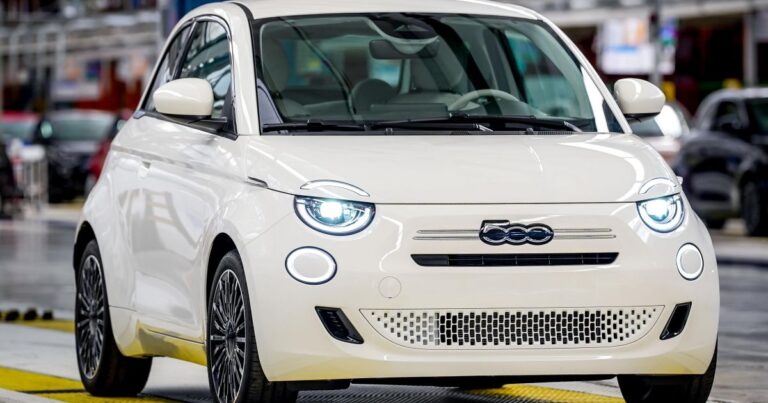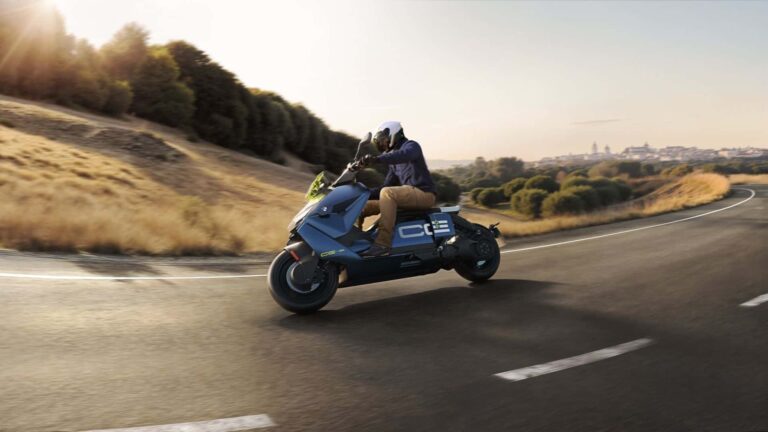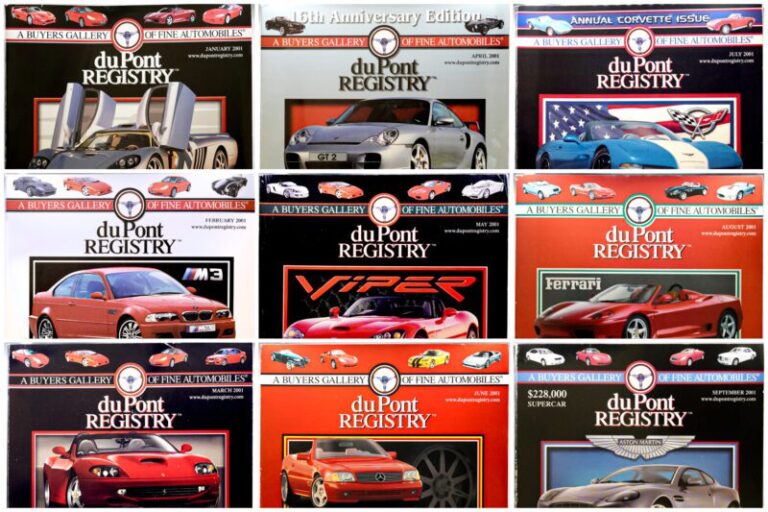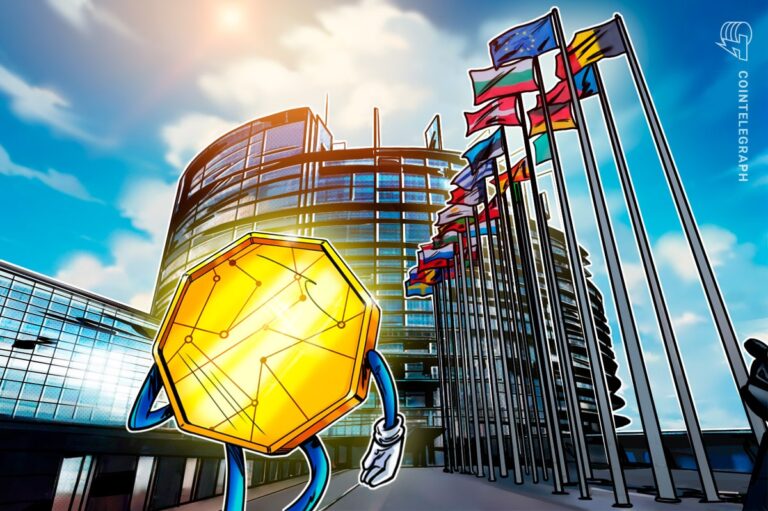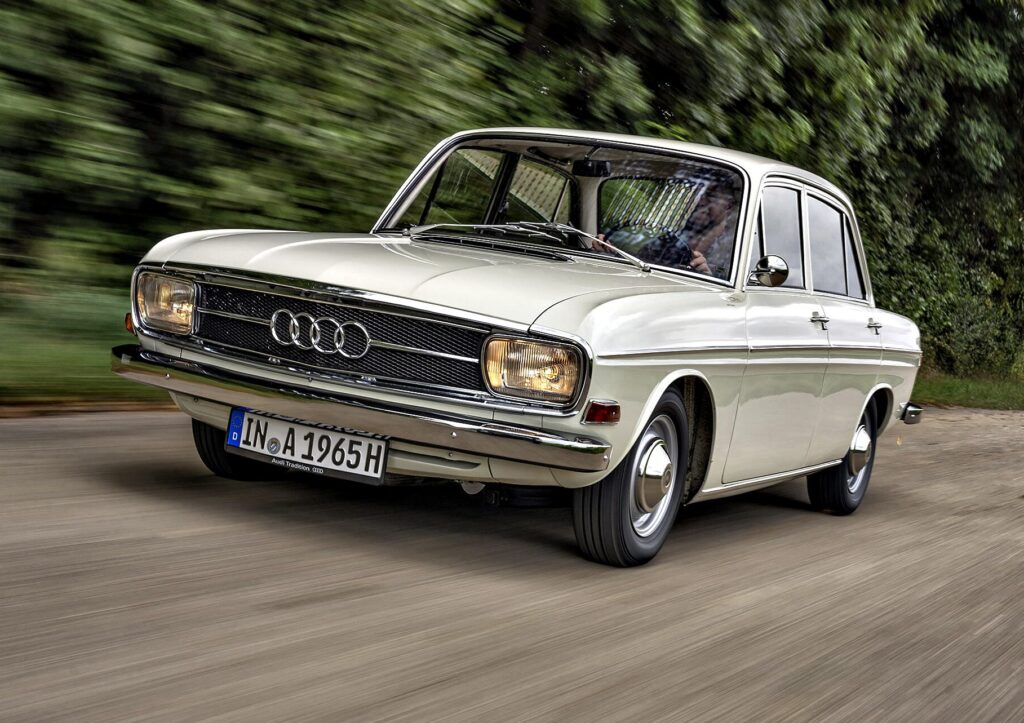
Today, Audi (Auto Union Deutschland Ingolstadt) which sells everthing from sedans, SUVs and sports cars, is a household name and one of the four major luxury automakers from Germany, besides Mercedes-Benz, BMW, and Porsche. But this wouldn’t have been the case if it weren’t for one specific model and VW’s fateful choice of resurrecting the brand exactly 60 years ago. What could have ended up as DKW or Auto Union, back in the mid-1960s, after decades spanning everything from war to exile and obscurity, ended up as a revival of one of Germany’s most storied automotive names.
With that, the first post-war Audi rolled off the production line on August 13, 1965. Officially known as the F 103, the car simply dubbed as the ‘New Audi’, under Auto Union GmbH was the first to be dubbed an Audi since the 1930s and was essentially a modified DKW F 102, but longer, sleeker, and powered not by a smoky two-stroke, but a proper four-stroke engine, in keeping with the times.
But why the name Audi? It all goes back to August Horch, a German engineer and race car driver whose last name translates to ‘hear’ or ‘listen’ in German. After being ousted from his own company in 1909, he formed a new one, and this time he chose to name it Audi, about his surname, but this time translates to listen, in Latin.
The four rings would come to represent the merger of Wanderer, DKW, and Horch under Auto Union, representing each of the brands. Once a symbol of elegant, low-volume engineering, the merged entity would lose significance post the great depression of the 1930s and looming war at the end of the decade.
After World War II, the union had shattered, and the Soviets took control of the state of Saxony. Horch and Audi were trapped behind the Iron Curtain. Only DKW managed to slip into West Germany, which is where former engineers set up shop in Ingolstadt, selling motorcycles and vans.
But by the 1960s, DKW was dying as sales plummeted. Auto Union, now under Daimler-Benz ownership, was floundering. The DKW F102, launched in 1963, was West Germany’s final mass-produced two-stroke sedan. While it featured a modern unibody shell and disc brakes, and looked like a car from the future, it sounded and smelled like the past. Buyers were done with smoky two-stroke engines, no matter how innovative. Sales slumped. Something had to give.
Volkswagen would eventually acquire Auto Union from Daimler. The company was in a bind as they had a car with potential, but no engine that buyers wanted. Enter the F103, which ironically began life as a DKW. Daimler had provided one last handoff to VW, a 1.7-liter inline-four (code-named M118) with an unusually high 11.2:1 compression ratio. Lying somewhere between a gas and diesel, it was a “medium-pressure” engine, modestly powerful, decently efficient, and crucially, not a two-stroke.
Stuttgart sent Ludwig Kraus, a gifted engineer, to assist. He took the F 102 shell, stretched it by 100 mm (3.34 inches), added rectangular headlights, reworked the grille, and shoehorned in the new “medium-pressure” motor with respectable torque and a more refined sound. The DKW name was dropped, and the AUDI was reborn.
Launched as the Audi 72 named for its horsepower, the F103 became the brand’s unlikely savior. Over the next seven years, the lineup expanded with the 80 and Super 90 (sport sedans), the 60 (a budget version), and the 75 (a rationalized blend of performance and economy). All used variants of the M118 engine, ranging from 1.5 to 1.8 liters. Transmissions on offer included four-speed manuals with column shifters; automatic was never an option.
The Super 90 topped the range, with over 160 km/h (100 mph) top speed on the Autobahn, and chrome accents that signaled prestige. Variants included two- and four-door sedans, and a 3-door estate or wagon called the Variant. Between 1965 and 1972, Audi built 416,851 units. Of which more than 386,000 were sedans and nearly 28,000 were estates.
Source: Audi
